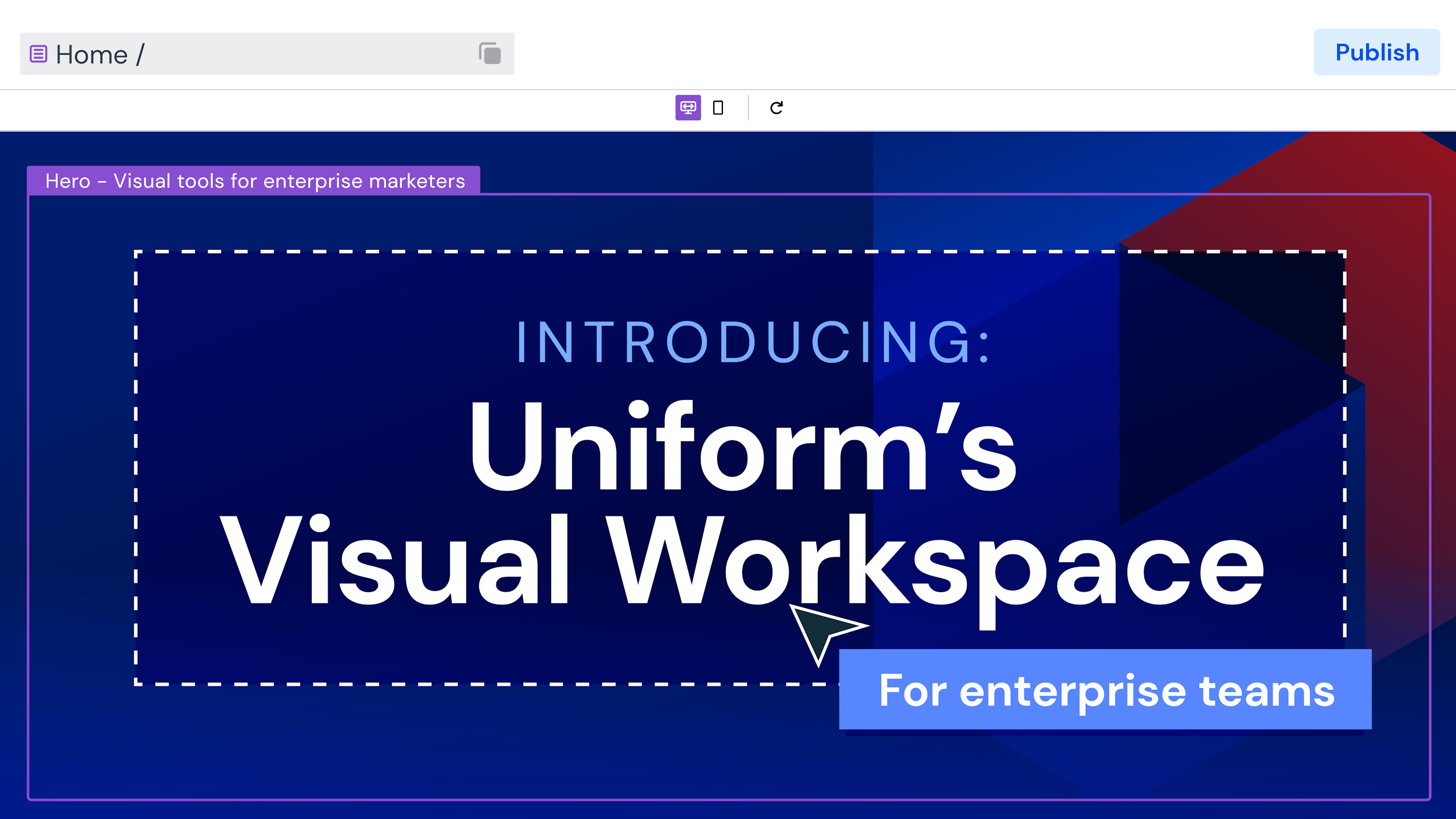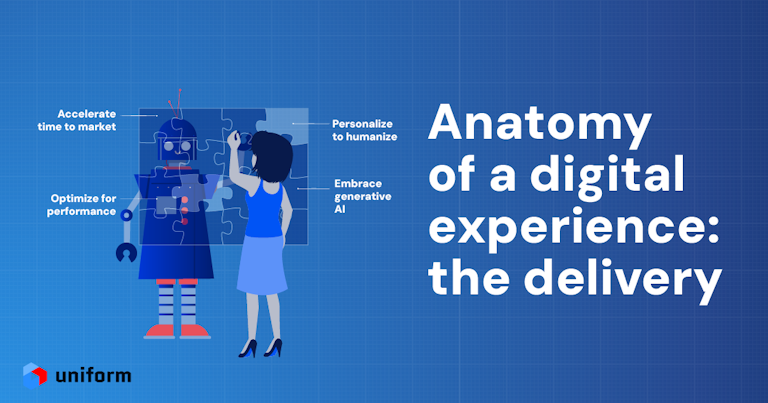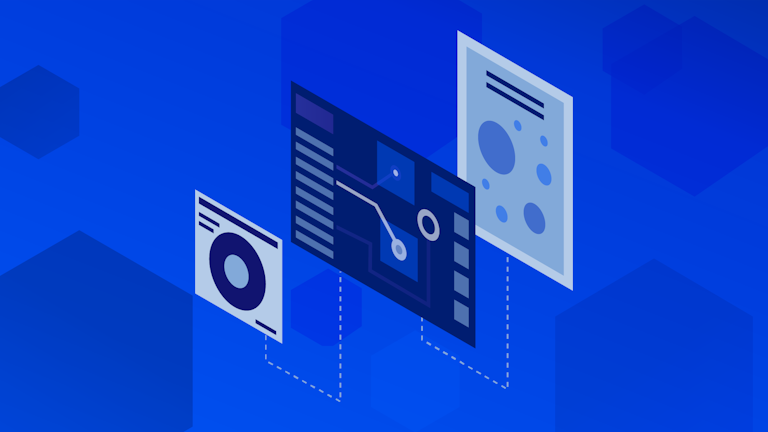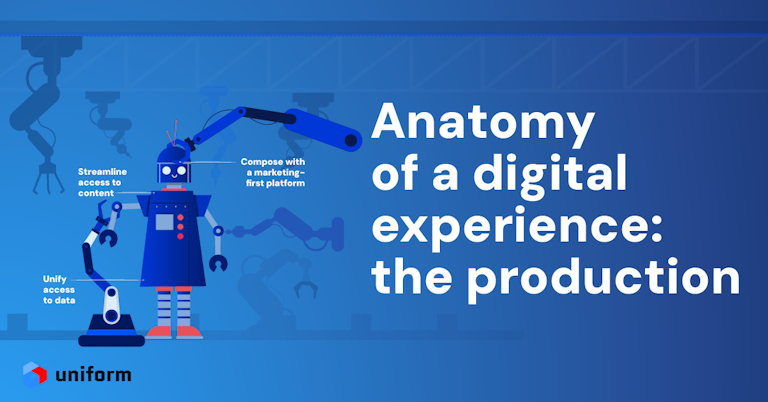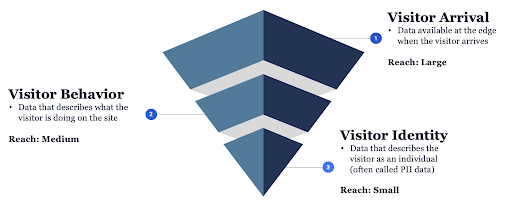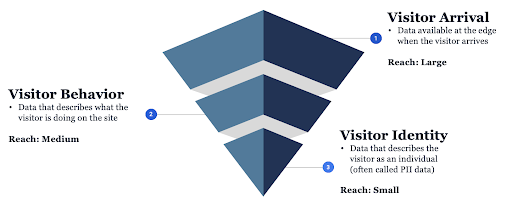Uniform blog/Leveraging intent signals for personalization
Leveraging intent signals for personalization
Leveraging intent signals for personalization
Just like visiting a retail store, when we go online, we all leave signals of intent based on our individuality, preferences, and in-the-moment objective.
Over the years, collecting more data about site visitors (you and me) has benefitted many commerce businesses. As consumers, we have opted into various services while giving away data about ourselves. With the rise of concerns about privacy and misuse of user data collected through site visits, you as business owners must be vigilant about using the right data at the right time while respecting consumer privacy.

To that end, keep in mind these principles:
- Personalization of websites means suggesting the most relevant, next-best action for visitors. Do not personalize inside out about your brand. Instead, strive to be a guide, outside in, for them with emphasis on the purpose of their visit.
- All personalization is based on data—often a mix of different types of data, which you can gather through visitors’ intent signals, e.g.:
- Contextual data (location, device)
- Personal data (gender; customer type; purchase history, including the amount spent)
- In-the-moment data (browsing behavior, events)
- Be sure to personalize for effect, i.e., deliver the most relevant experience for the largest audience. Think about the audience as elements in a funnel:
- All visitors who arrive at your site, 30-40% of whom will leave immediately
- Visitors who interact with your site content
- Visitors who share data about themselves, such as an email address in exchange for a newsletter subscription
The diagram below illustrates the intent signals at the various funnel stages.
For optimal results, since most visitors are anonymous, focus on the top of the funnel.
Leveraging intent signals is an excellent first step for personalization. Here’s the data to harvest from the three funnel stages:
Visitor arrival (those coming to your site):
- Device type
- URL (landing page)
- Cookies
- Language
- Location
- Third-party details: insights from the data management platform (DMP), account-based marketing (ABM), etc.
Visitor behavior (all nonbouncing visitors):
- Specific pages viewed
- Number of pages viewed
- Goals and events triggered, e.g., adding a product to a shopping cart or signing up for a newsletter
- Behavior-based score, e.g., interest in a product category or a lead score
Visitor identity (those who are becoming known contacts):
- Gender
- Age
- Relationship (customer, partner)
- Orders
- Products or services purchased
- Active opportunity, e.g., for B2B
As a perk for your visitors, map the latest data to content that is the most relevant to them. A few examples:
- A visitor who has been viewing content for product category x in the last five page views is most likely more interested in product x than product y.
- For visitors who have signed up for your newsletter, do not display the prompt for newsletter subscriptions.
- For visitors whose active shopping cart contains discounted products, display more of them in the same categories.
- For those who visited your site through a link from a pay-per-click (PPC) marketing campaign on a specific service, show more content relevant to that service in quest of deeper engagement.
Top-of-funnel intent signals yield two significant benefits. First, it’s not PII [personally identifiable information]; and, second, the data is available as soon as someone arrives at your site and starts browsing while remaining anonymous. Do consider putting that information to good use.
Interested in learning more? Check out Uniform Context for personalization and contact us for a demo.
